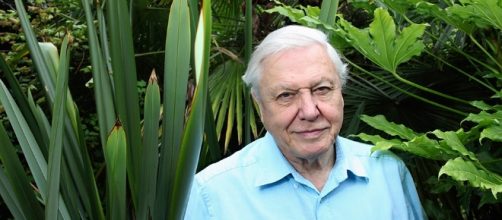So last night Sunday 6th November 2016 marked the airing of the first episode of "Planet Earth 2" with Sir David Attenborough on "BBC1" and from previews of the season, it looks like it's going to deliver!
David Attenborough once again is travelling to all different parts of the planet looking for and discovering unique amazing animals. Discovering animals in some of the most remote parts of the world, Attenborough and his camera crew capture and find some incredible activity happening around the animals.
David Attenborough
Sir David Attenborough throughout his whole career has had involvement with the BBC, he has narrated over 50 episodes of Natural World, BBC Wildlife Specials and The Blue Planet.
So to say people are use to hearing his voice is an understatement! He has, in my opinion, a voice that soothe's people while watching his programmes and this is one of the reasons why people enjoy watching programmes which involve him.
In 2006 the same team returned to start recording "Planet Earth" who has previously helped film The Blue Planet. "Planet Earth" was to be the first #BBC documentary series to ever have been filmed in High Definition, but during this Attenborough was given a more permanent role within Frozen Planet which focused on majority of the polar regions of the planet, in particular on the history of it. And now in 2016 he is back again with "Planet Earth 2" which has brought with it a whole new way in recording the animals themselves, on Graham Norton's show, Friday 4th November, Attenborough describes how the team have found out where these animals main witnessing points are and they have then set up motion cameras which turn on to record as soon as the animal itself close to it automatically turning it on and recording!
This will have been used for certain animals which are to appear in the show like the Snow Leopards which are incredibly rare.
(catch up with the full show on BBC iPlayer)
Planet Earth 2: Episode 1
SPOILER ALERT!The first episode of Planet Earth touched upon certain animals like the Pygmy Sloth, the Komodo Dragon, Lemurs, Iguana's and also included: Volcanoes!
First of all you are thrown in with the incredibly cute male Pygmy Sloth! This sloth is 3 toed on each hand and foot, it is water based and has an island lifestyle as this is ideal for it since only a few of them exist! The Pygmy Sloth is Red Blooded so it's natural instinct is to mate with another, but, once a female has mated and given birth she is not interested for 6 months and the baby does not let go till then also.
The island they live on is as big as Grand Central Park in NY but for that to be a whole island, that is tiny.
Next they move onto the Lemurs! The Lemurs colonise and there are very few competitors within the lemur herds and they originate in Madagascar. When born baby Lemurs have to learn to survive from day one based on instinct and watching mummy Lemur because food and water are hard to find where they live and it is the mothers who sustain the Lemur family.
Now, out towards the pacific ocean this is home to some absolute amazing things. in particular the "Sea Going Iguana's"! These creatures look incredibly prehistoric, making you instantly think of dinosaurs, they can hold their breathe from up to 30 minutes while swimming in the ocean.
There are more then 7,000 of them and they also help the crabs as they feed on the dead skin of the Iguana's, making their life seem incredibly harmonious. Their babies however are born in the sand inevitably making them pretty vulnerable to snakes therefore breaking the harmonious feeling!
Those are just some of the animals that feature in Episode 1 and paired with David Attenborough's voice, makes this such an amazing programme! I can not wait for what else is to come
So every Sunday at 8pm be sure to tune into BBC1! I know I will be. Enjoy the series preview!

